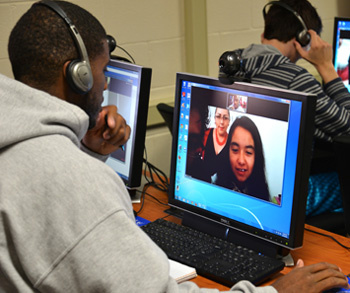Faces of Dreamers: Yanet Limon-Amado, Virginia Commonwealth University
This is one in a series of posts on individual Dreamers, undocumented immigrants brought to the United States as young children, many of whom are under threat of deportation following the Trump administration’s decision in September 2017 to rescind the Deferred Action for Childhood Arrivals policy, or DACA.
When Virginia Commonwealth University (VCU) senior Yanet Limon-Amado co-founded UndocuRams, a student organization advocating for undocumented students, she channeled her uncertainty into action.
“We just really don’t know what’s going to happen next,” Limon-Amado said, speaking to The Commonwealth Times about the current political discourse around immigration, “If we can do something, even at a really grassroot level, it’s something being done.”
As someone who came to the United States from Peubla, Mexico, at age eight, UndocuRams’ mission is personal for Limon-Amado.
“Creating this organization [can] lead to other students continuing with their educations,” she said. “And having something, or someone, to uplift them.”
And the organization has big goals in mind. A participant at the fourth annual “I Stand With Immigrants” Day, UndocuRams hosts trainings for VCU students, faculty and staff to build a more inclusive campus community.
These conversations and events are central to the organization’s identity and to sharing the stories of VCU’s undocumented students.
“It’s important to realize undocumented students are in the classrooms with you, next to you,” Limon-Amado said. “It was an appropriate move for us to start educating VCU’s staff, students and community members of the obstacles many face on a daily basis to have access to higher education.”
UndocuRams is also currently working to raise two $1,000 scholarships for undocumented students.
—Zubin Hill
If you have any questions or comments about this blog post, please contact us.


